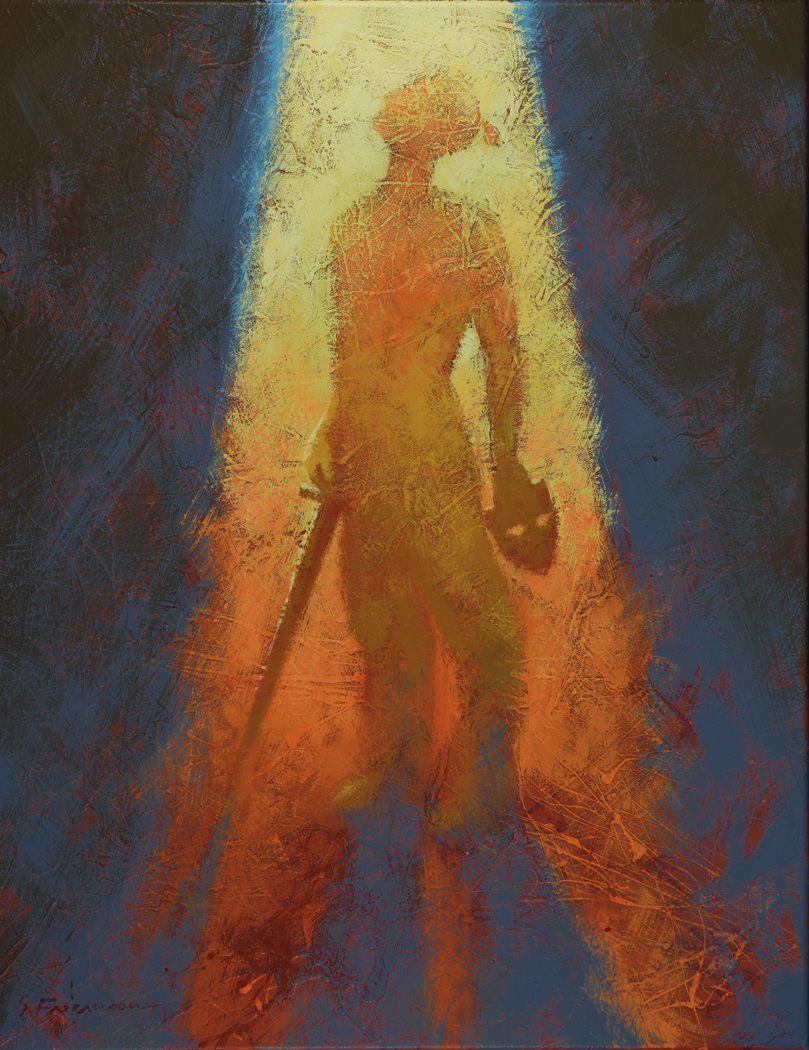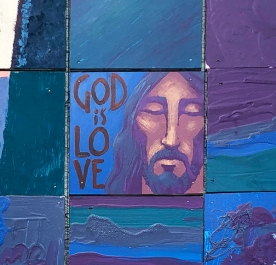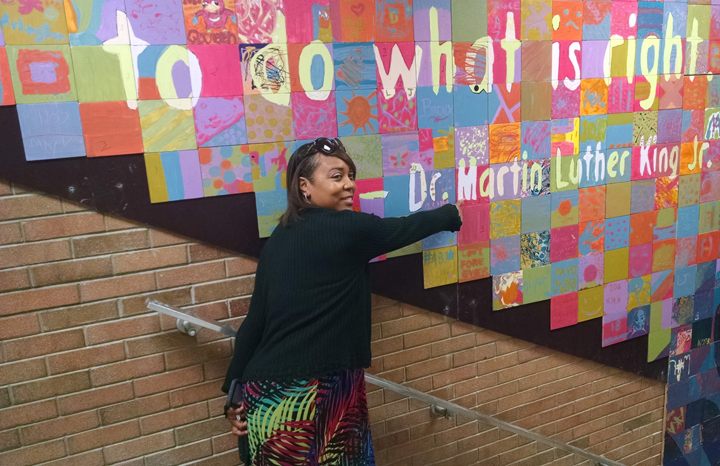
“Transformation” by Scott Freeman, 22×28, latex paint on canvas
Some thoughts around community and authenticity
I haven’t done a great deal of worship painting, (defined as live painting during a worship service,) and when I have done so, I’m not sure that what I’ve painted has spoken to many people. But recently I did a worship painting that seemed to connect with several bros. After the service I had some great conversations, and several people wanted to purchase the painting.
I was a little embarrassed about the subject matter, due, I suppose, to my fine art schooling and the fact that Christian subculture can get pretty cheesy at times. But I do consciously aim to make work that exists in a place of tension between populism and elitism. This is possibly due to the fact that I had a thoroughly blue-collar upbringing, but then attended a private, elitist art college. I found that both had valuable things to offer.
On this night, I figured that making a painting featuring both a sword and a mask would render it hopelessly clichéd in the eyes any art snobs in the room, but I couldn’t think of a better way to communicate what I wanted to say. So I ignored all that and made the painting.
The painting
I had some friends in mind as I made the painting – guys that are struggling to overcome various addictions, and for whom this struggle has been a protracted battle. As I’ve watched my friends I’ve been impressed by their humility; by their willingness to make themselves vulnerable and accountable to our church congregation of fellow travelers.
This has required them to remove their masks; to allow us into their lives to see them as they are in their failures, and allow us to accept them and care for them. But it’s difficult removing masks. It’s counter-intuitive. It requires a death to self, and that’s what the sword represents. It really is a battle. I see my friends as warriors.
As I was painting I noticed that the mask has the shape of a shield. It struck me that we may try to use masks as a shield; as a way to protect ourselves, and as something to hide behind. But a mask fails as a shield. A mask is too small, and we all know what’s behind the mask anyway – a broken person who needs connection with God and with other people. We intuitively know this because it’s true for us all.
So the figure in the painting is instead looking to the light of God; exposing himself to God; surrendering himself to God; receiving new life from God, resting in God’s grace. The mask is down. The armor we actually need is the spiritual armor described by the apostle Paul, including the shield of faith and the sword of the Spirit, which is the word of God (Eph 6:10-18).
Why do we pretend to have our poop in a group?
Church culture can tend to perpetuate mask-wearing as a way to hide our secret sins and imperfections. Maybe it’s because we celebrate the destination, and it’s easier to present the impression we have already arrived than it is to do the uncomfortable work of making the inward journey. Or maybe we feel we don’t have fellow travelers that we can trust. Maybe for a wounded person it feels safer to forego taking a relational risk. Maybe we just don’t know a better way.
But hiding our sins and imperfections is to misunderstand what Jesus envisioned a community of His followers to be. The church was intended to be a subculture of life, called out from a culture of death. Life as God defines it means walking in communion and love, and walking in freedom that comes from addressing our brokenness.
The process of coming to the Light so that the darkness in our hearts is exposed is a process we must all undertake if we are to live in the community of God’s Life. Entrenched lies and destructive patterns must be identified, named, confessed and brought to light, put to death, and then replaced with Truth. Otherwise, they will continue to inhibit the Spiritual healing and wholeness that God has in mind for us.
The hidden stuff has a way of not staying hidden anyway. If it remains present it will shape our identity and our behavior, even affecting those relationships around us as it tends to come out in hurtful or inappropriate ways.
Restoration and Transformation
We were made for wholeness, for freedom, and for loving communion with God and one another. He has created us to need Him, and to need community with one another; to know and to be known; to experience relational unity as human beings helping each other along in the process of being restored to wholeness. The shameful stuff, whatever it may be, has power over us as long as it remains hidden.
“…If we walk in the Light as He Himself is in the Light, we have fellowship with one another, and the blood of Jesus His Son cleanses us from all sin. If we say we have no sin, we are deceiving ourselves and the truth is not in us. If we confess our sins, He is faithful and righteous to forgive us our sins and to cleanse us from all unrighteousness”
(1 John 1:7-9).
May we walk in the Light together.

Prints are available of this painting. Email me if you’re interested at scottnmollie@yahoo.com.












